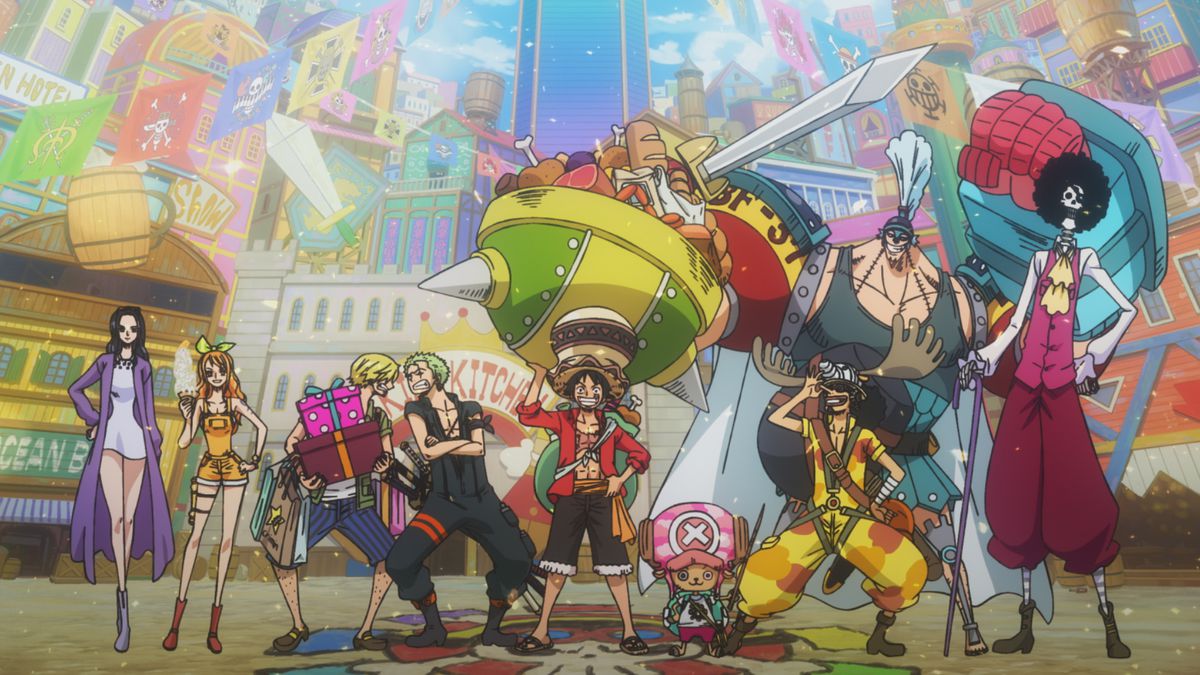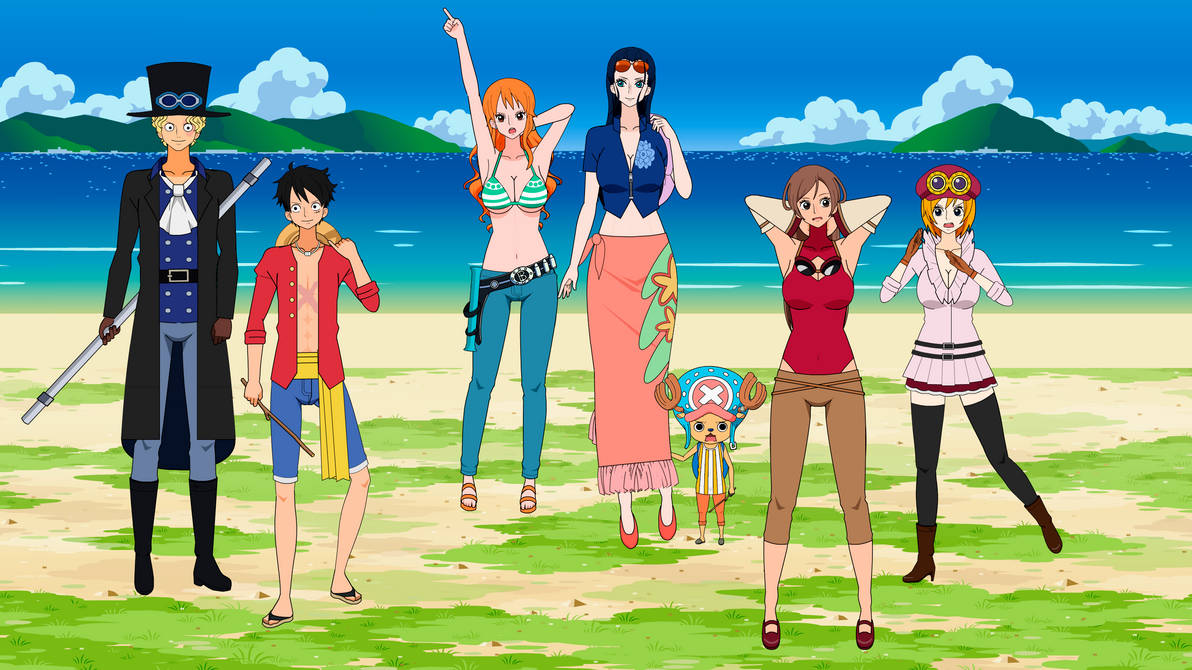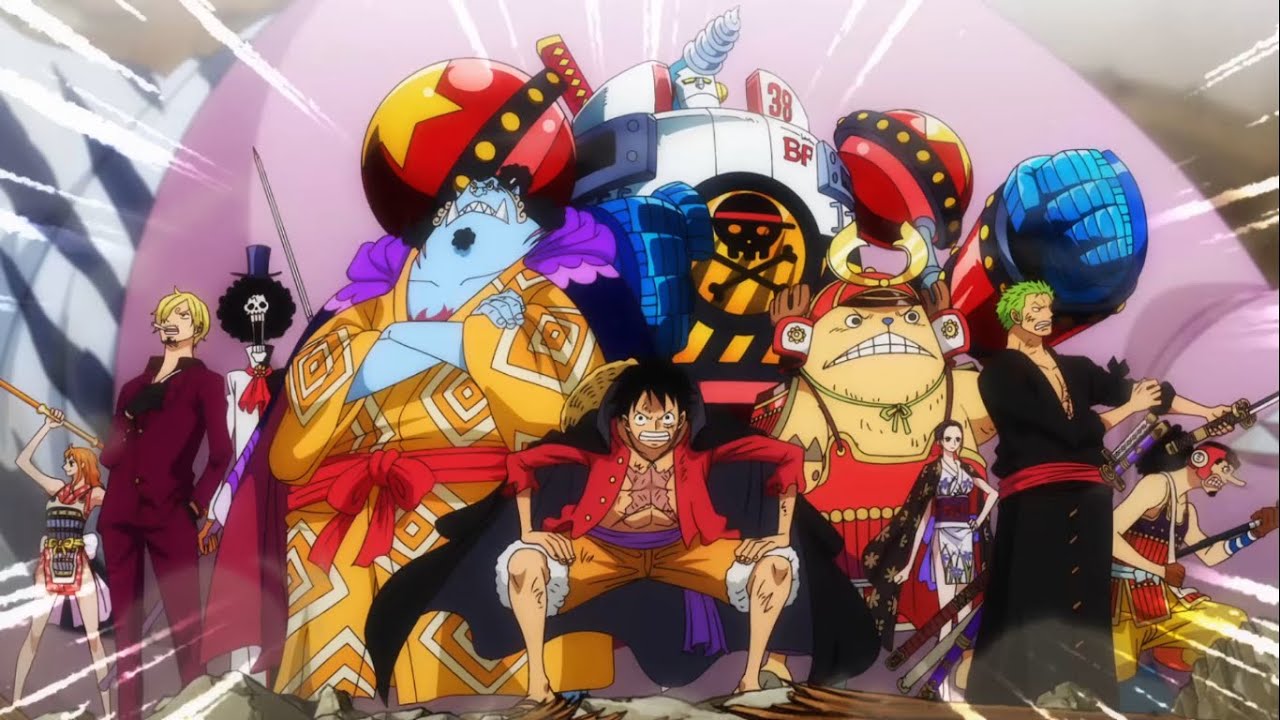"Sailing Through the Grand Line: A Review of One Piece"
List of Contents
|
1) Title |
|
2) Intro |
|
3) Body |
|
4) Conclusion |
For supported broswers, turn up the device audio for some epic background music as you browse!

One Piece: Why is it Special?
One Piece’s reputation precedes it. Setting a Guinness World Record for the most copies published for the same comic book series by a single author, it’s been in near-constant serialization for over 15 years and shows no signs of slowing down anytime soon. One Piece is a Japanese shonen manga, an action-oriented fantasy following in the footsteps of renowned titles like Dragon Ball. Yet, in terms of longevity, One Piece stands head and shoulders above its influences and contemporaries . So, what makes One Piece special?

Story Structure – A Grand Odyssey
One Piece is a simple story about a treasure hunt. The story
follows the adventures of Monkey D. Luffy, a happy-go-lucky boy
harbouring the powers of a “Devil Fruit” that turned his body
into rubber. He sets sail for the Grand Line (a colossal
planet-spanning sea) in search of the fabled treasure known only
as “One Piece”. What follows is a massive island hopping
adventure– which allows Luffy to slowly assemble an equally
ambitious crew, battle rival pirates, and fight off Marines
(operatives of an oppressive World Government bent on stamping
out piracy).
Each island has a distinct geography,
social structure and position in the interconnected network of
the Grand Line: some are occupied by Marines, others are
independent kingdoms, and still more are uncharted territory.
The surprisingly intricate geopolitical landscape allows for a
wide variety of plot threads; Marine bases can be invaded by our
heroes to rescue comrades, while alliances can be forged with
neutral kingdoms to quell rebellions. The consequences of these
varied story arcs form a constantly evolving world that exists
independently of our heroes.
The versatility of this
setting works wonders for a long-running action comic by
preventing narrative stagnation and providing a constant sense
of progression. Sailing to the next island is always accompanied
by anticipation for a new story-line and new ideas, and it’s
always a tangible step closer to the crew’s ultimate goals. One
Piece, therefore, is one of the few shonen manga that justifies
its length. The journey’s grand scale is complemented by the
story’s length, novel ideas are explored at each island and the
overarching narrative maintains a steady momentum towards a
definite, inevitable finish line.

Artwork – Humour and Worldbuilding
Eiichiro’s Oda distinctive artwork is the most immediately
noticeable aspect of the comic. Faces and bodies have
exaggerated proportions, often contorting to convey strong
emotions or pull off inhuman martial arts feats. And the designs
of characters themselves walk a fine line between the
traditionally cool and hilariously goofy: where else can you
find a megalomaniac king/mafia swathed in flamingo feathers, a
cyborg sporting a pompadour, or a government assassin who morphs
into a cuboid giraffe? This isn’t surface level novelty either,
as character designs are often visual indicators for a
character’s colorful personality or superhuman martial
abilities. For instance, the aforementioned cyborg can detach
his sideburns to use as projectiles in combat.
This
design philosophy carries over to the world itself. We’ve seen
islands on the back of ancient elephants, islands made of giant
pastries, islands housed in undersea bubbles, etc. However,
worldbuilding is never sacrificed for the sake of novelty or a
cheap laugh. Geographical features pose challenges for our
heroes, like using a freakin’ boat to reach an island in the
clouds, or play into the aforementioned social structures and
global political landscape. This attention to detail ensures
that the world feels cohesive and lived-in despite its
absurdity.

Characterization – Friendship and Ambition
Beyond the wonders of adventure, One Piece heavily focuses on
camaraderie and platonic relationships. The concept of building
a crew remains integral to the story progression and the
characters. Crew members are handpicked by Luffy and, through
the course of the journey, have their motivations and
personalities thoroughly explored (often through flashback
sequences).
Roronoa Zoro is a prime example of this approach to
characterization. An ex-bounty hunter, Zoro is bent on becoming
the greatest swordsman in the world. He’s the first person to
join Luffy’s crew and is initially skeptical of the fledgling
captain. However, Zoro soon gains real respect for Luffy’s wild
ambition (as it mirrors his own), and becomes his most ardent
supporter, despite being qualified to be a leader in his own
right. While Zoro’s loyalty demonstrates his own growth, it also
highlights Luffy’s leadership capabilities. When the going gets
tough, even the fun-loving Luffy gets serious and takes up the
captain’s mantle.
This type of development has been
afforded to all ten members of the crew so far, and forms a
believable bond between all of them. Beyond an innate desire to
see new islands and characters, it’s this friendship that drives
the story forward. This isn’t a story about chosen ones on a
quest to save the world, it’s a story about misfits and weirdos
chasing their unrealistic, foolish dreams. Friendship ties the
weird, disparate elements of the story’s world together. No
matter where we go in One Piece, we’ll do it as a crew.

In Conclusion
At the end of the day, One Piece isn’t an infallible comic. Not every arc is a winner, some characters aren’t especially deep, and the humour isn’t for everyone. But it’s worth examining the properties that make it unique, as these same properties have cemented it as one of the longest-lived stories of our time, a true epic in the making. One Piece’s strengths reveal themselves as the world unfolds, and it’s a lot of fun to be along for the cruise.

Contributed by Avi DasGupta